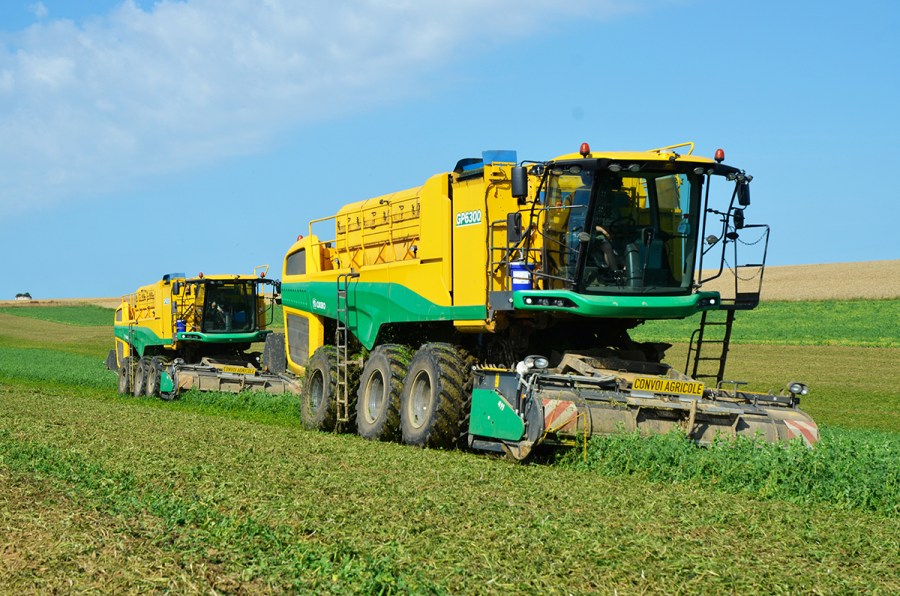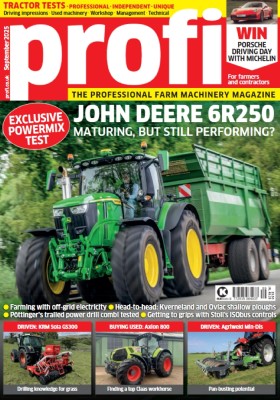We travelled to France to see two of the five pre-production versions of the Oxbo GP6300 self-propelled pea harvester.
KEEPING IT BRIEF
- Five pre-production GP6300s in the fields this season
- Made at the Oxbo facility in Roosendaal (NL)
- Powered by a 9.3-litre, five-cylinder, 400hp Scania engine
- Available with 3.5m, 4.0m and 4.2m picking heads
- Approx price tag €800,000
Obtaining accurate information on the global pea area and number of harvesters sold each year is nigh on impossible, and our best guess is approximately 2.5 million hectares of the crop are grown each year. Global production is estimated at around 20.5 million tonnes and the number of new harvesters sold each year is likely to run into tens of units, not hundreds. And here lies the problem. Over the years, Oxbo has acquired Bourgain, FMC, PMC and Ploeger, giving it four different brands of self-propelled pea harvester in what is let’s face it a niche market.
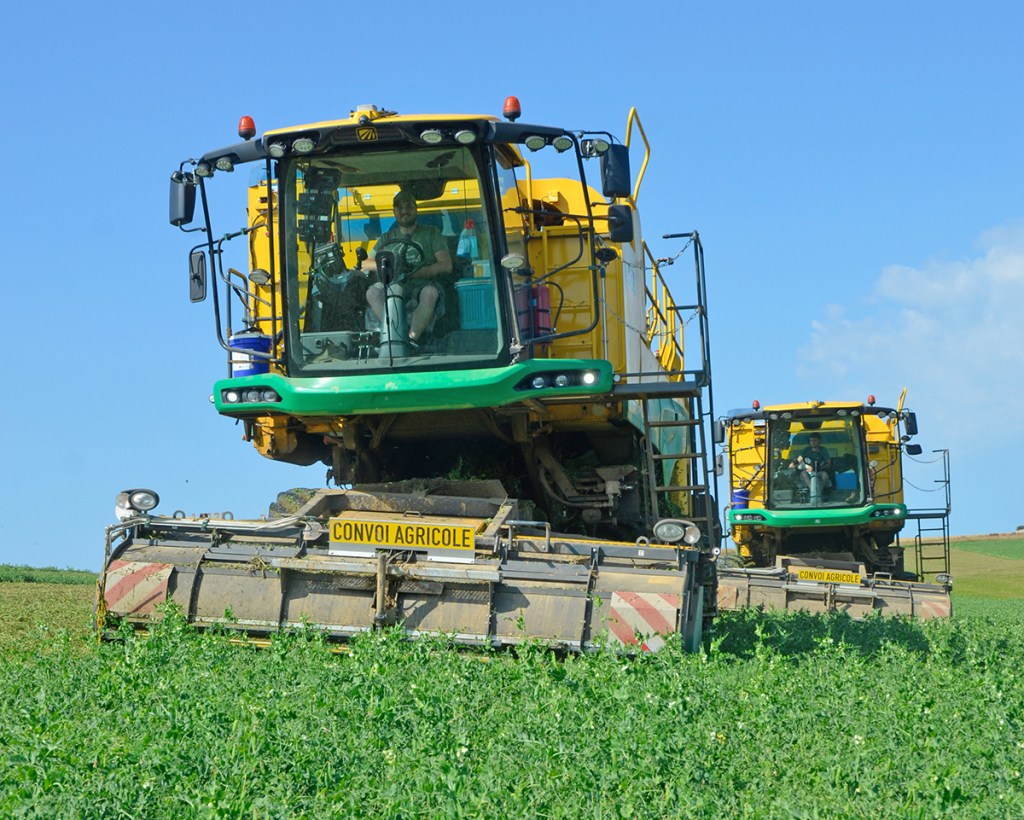
Mash up
Reason enough for the company to take a long hard look at the portfolio, pluck all the best technologies from all four brands, and mix them with a few new ones in a universal machine to do all jobs in all conditions.
The development work began in 2020, with the first prototype ready for testing towards the end of the Belgian and Dutch pea seasons. Based on an EPD540e, but then on a six-wheeled chassis, the initial focus was to develop a six-wheel drive system. The prototype then ran in the mid-west of North America where a few modifications were made.
Numerous other prototypes that followed were also evaluated in Europe and the UK during the next two seasons, and we joined Quentin Seconda (Oxbo commercial department) and Wouter van der Meulen (Oxbo European sales and marketing director) in France to see two of the five pre-production versions of the GP6300 (Global Pea Harvester).
The world’s largest pea growing countries are in Asia. Closer to home, Europe is the most important region for Oxbo, where France, Belgium, the Netherlands, are the three main markets, followed by the UK.
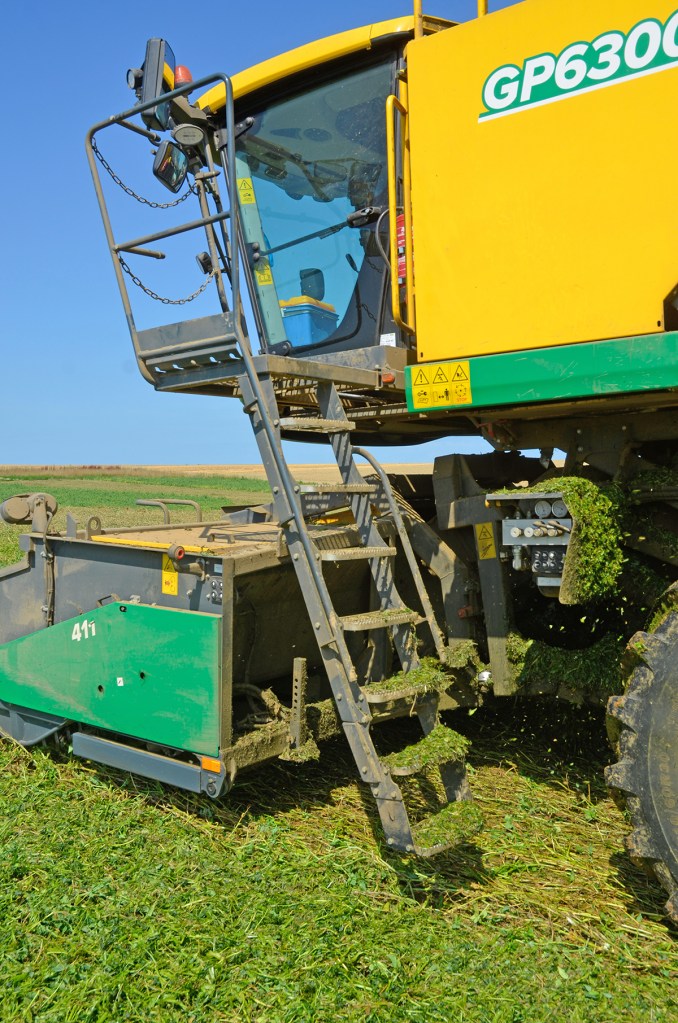
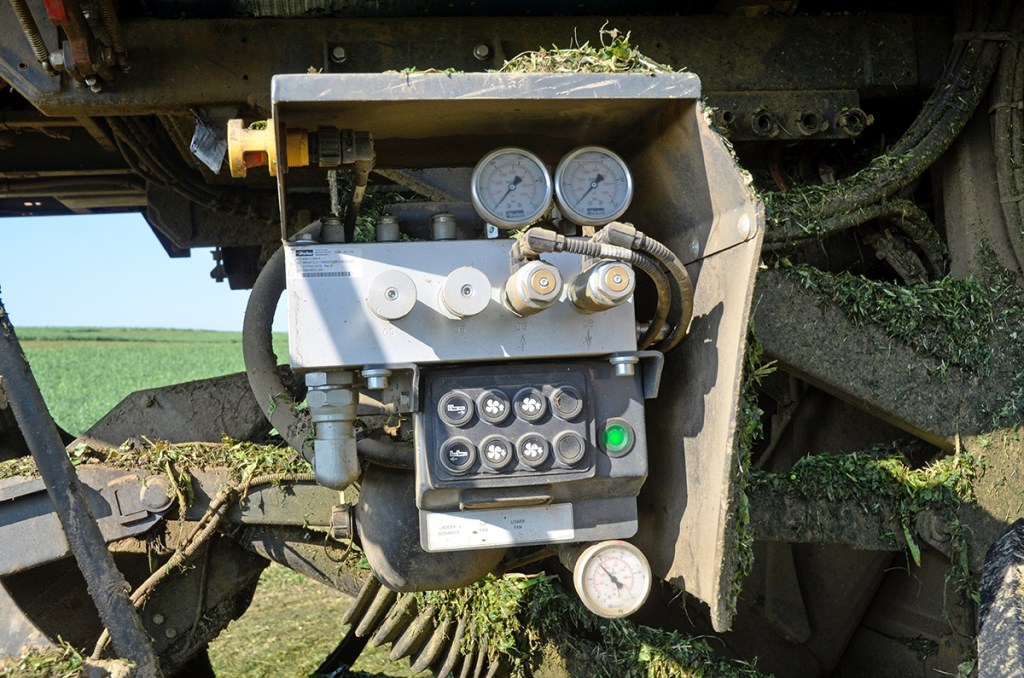
French peas
France, which produces 270,000-300,000t of peas each year is the largest European producer, and is where three of the five pre-production GP6300s made for this season work (the other two are in Belgium).
French contractor Picardie Récolte harvests around 5,000ha of peas a season. This requires a 15-strong fleet of BCMH machines. The French contractor harvests spinach with an old Bourgoin harvester and a newer Ploeger MK2100, but the two GP6300s now on the books are the first with Oxbo branding.
Based at Etricourt Manancourt (Somme area south of Lille), the contractor harvests peas across much of northern France. Split into teams of two or three machines, each one generally covers an area within a radius of 40km.
The GP6300 is a marriage of some of the best features from current Oxbo machines. For instance, the redesigned and easier to clean air duct for the top fan inlet comes from the GP1189. Some of the rest of the spec is similar to the latest EPD540e.

This includes the 9.3-litre, five-cylinder, 400hp Scania DC09 motor, Claas Vista cab and 875-litre fuel tank. The threshing system is also largely similar, but then with a few tweaks to be discussed later.
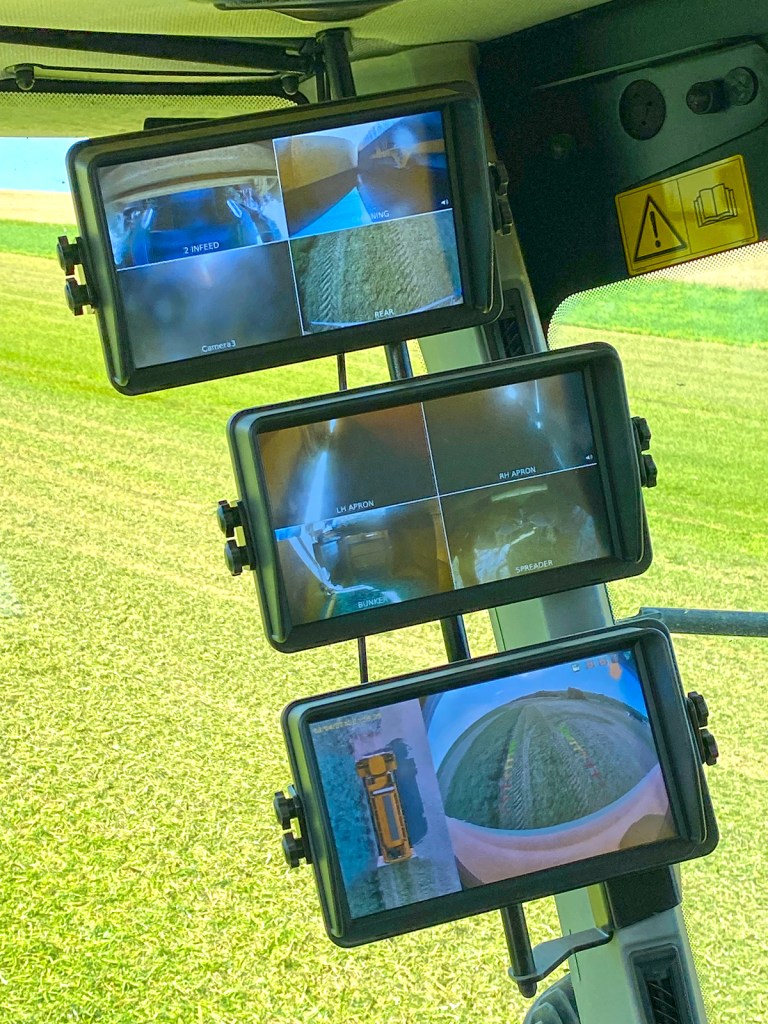
There are plenty of differences, though, the most visible one being the six-wheeled configuration. Strictly speaking, the GP6300 is not the first six-wheeled pea harvester. British manufacturer FMC (acquired by Oxbo in 2002), introduced the 979 six-wheel pea combine back in 1989.
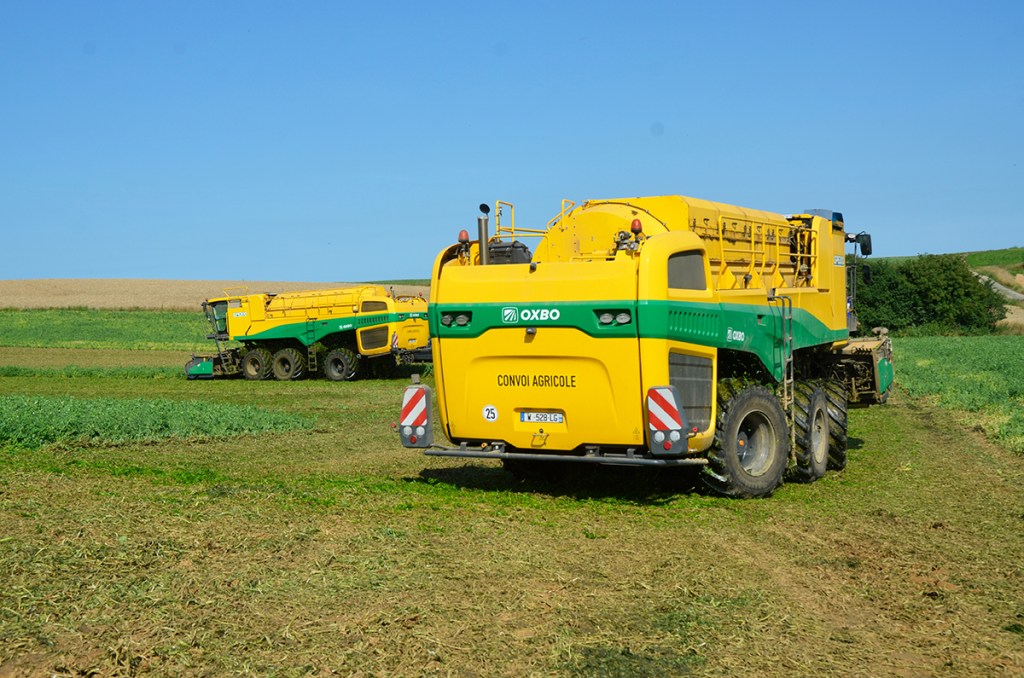
Tyre talk
Oxbo had the six-wheeled pea combine with the 6170, and more recently the GP1189. The big difference is that the GP6300 runs on six 710/60 R30 Agriflex 372 tyres, whereas the boots on the rear axle of the EPD540e are a smaller 700/45 R26.5. Plus, there is another major difference in that a new six-wheel hydrostatic drive concept was developed for the GP6300.
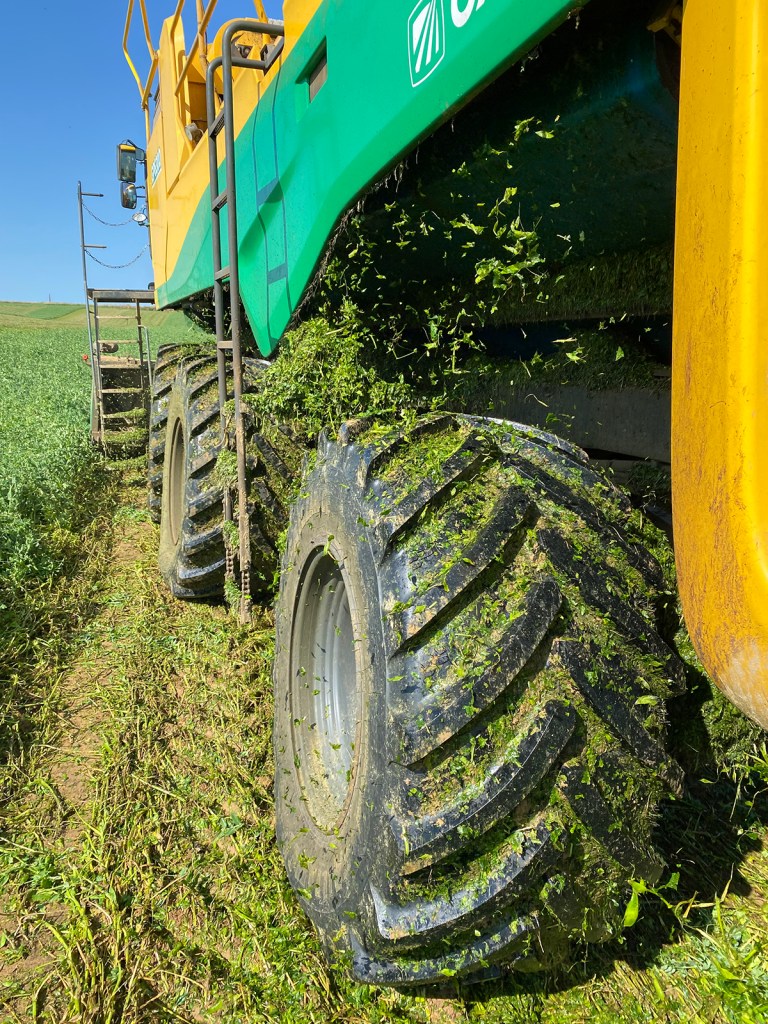
The harvester continues to steer via the rear wheels. The new bit is that the front wheels also turn by 4-6 degrees. “Main benefits of this are tighter headland turns,” explains Mr Seconda, “and the concept also provides a bit of crab steering to ensure that the rear wheels are kept well away from the standing crop.”
I know from several seasons experience driving a pea harvester in Spain that the mound of soil left pushed up as the rear wheels sink in soft conditions makes it extremely difficult to harvest the first row of peas on the next pass without taking in some soil. The crab steer mode, and the larger 710/60 R30 tyres, means this is no longer an issue and the larger tyres also help to reduce the footprint.
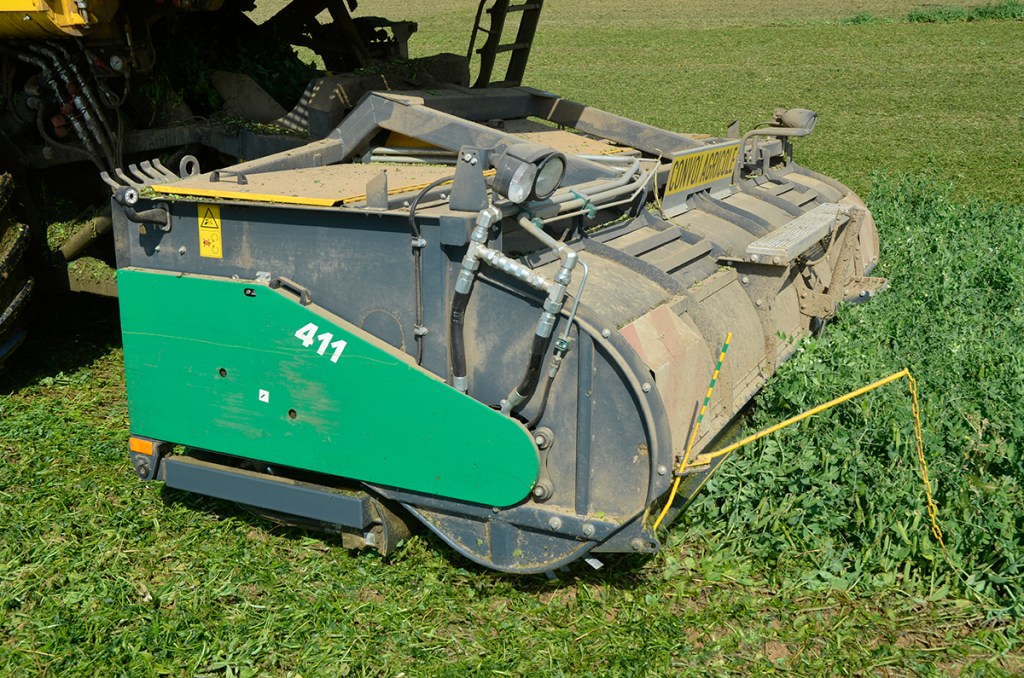
Crop differences
Crops in North America are generally taller and thicker. This led to the development of the new picking head on the two machines we saw. The big difference between all current heads is that the contra-rotating belts have been ditched for augers on the GP6300. The speed of the augers in linked to that of the tined reel. Engineers soon discovered that the technique not only helps to reduce pea losses but also requires less maintenance.
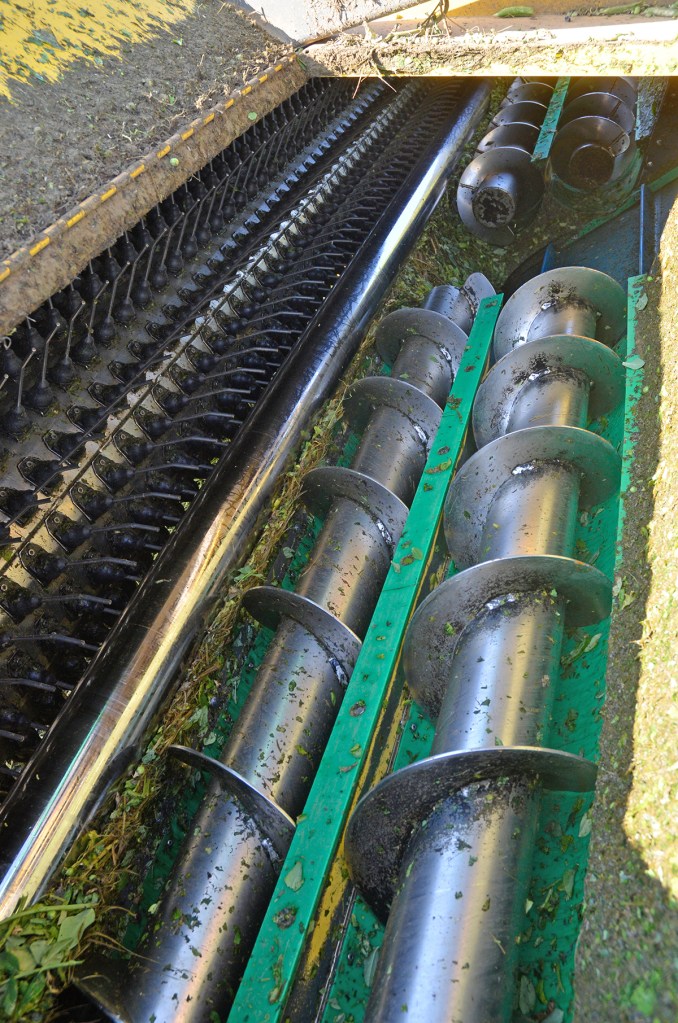
The picking head is available in three widths; 3.5m, 4.0m and 4.2m, of which the 4.0m will be the popular width in Europe. The intake elevator has been widened by 10cm to provide more space for peas and haulm to enter the threshing system.
This is largely similar to the four-drum threshing system on the latest EPD540e, where the main beater was replaced by an auger. This results in faster distribution of the crop over the full length of the threshing drum, improving the sieving surface. The length of the auger on the GP6300 has been reduced to cover the first half of the drum. The reason for this is to keep material in the drum for as long as possible.
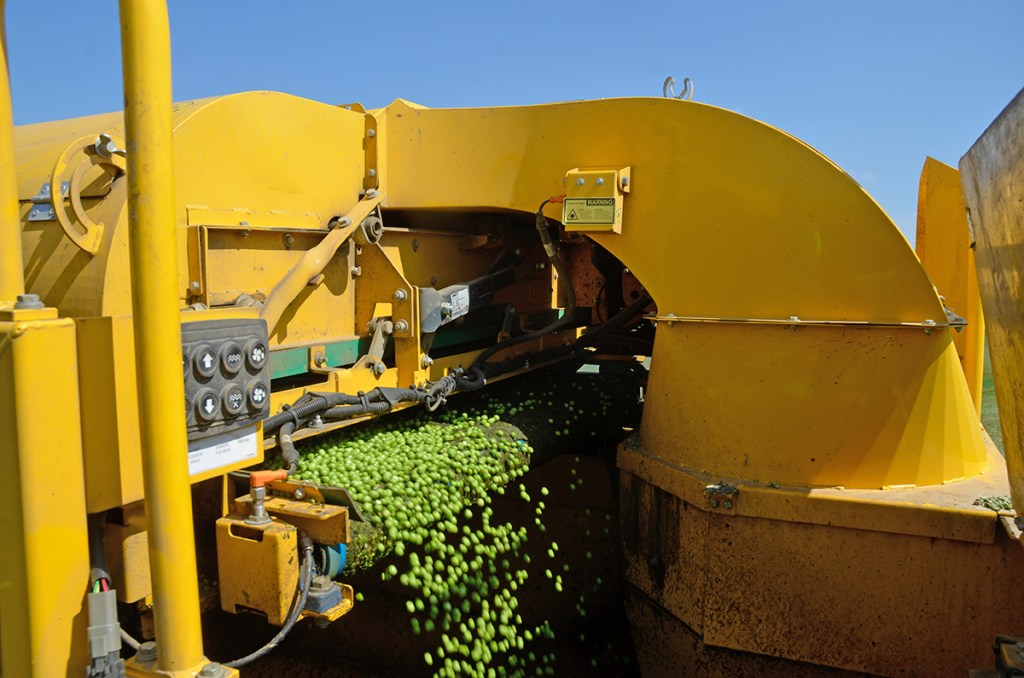
Other notable points include the automatic bunker filling option. A sensor at the top of the bunker detects when the heap of peas reaches a certain level. The bunker floor then automatically moves to the left or right (depending on which side the unloading elevator is located).
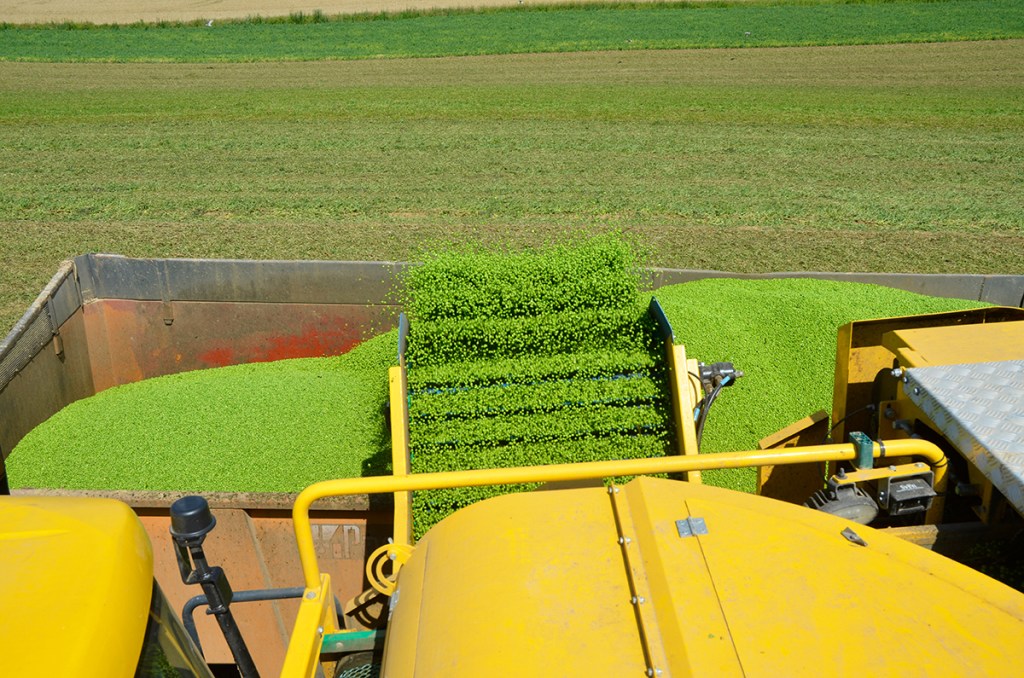
An audible alarm sounds when the 2.3t hopper is 80% full, and on the outside the warning lights flash to let the trailer operator know. The beacon on the cab roof then automatically activates when the hopper is full.
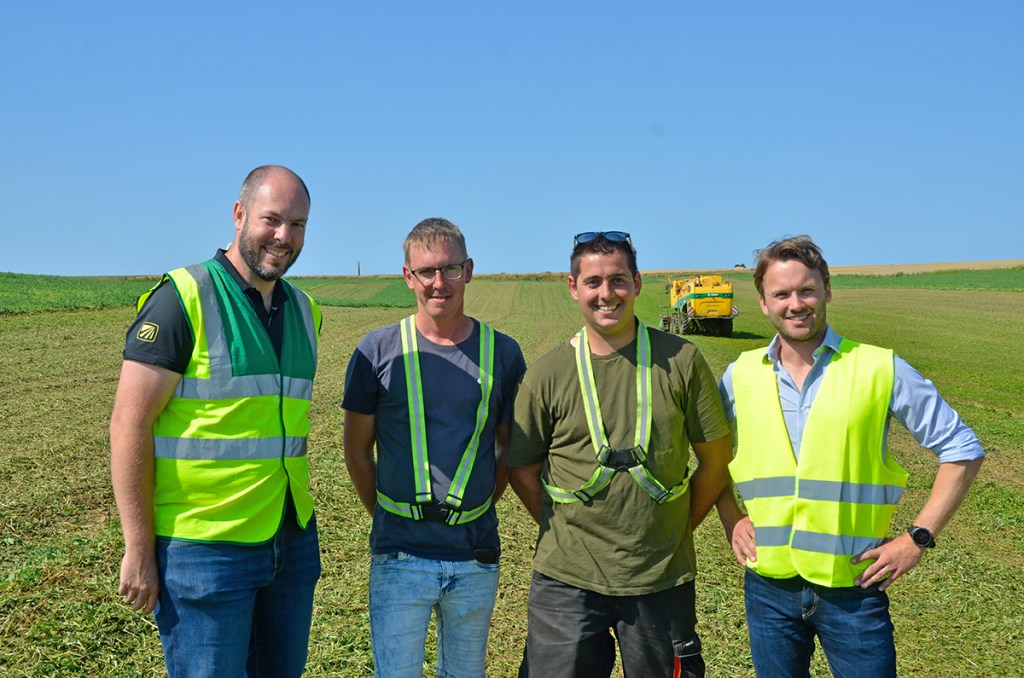
The lights have been flashing frequently this season, which has been a good one for French pea growers. “This field averaged 9-10 tonne per hectare,” says Jonathan Legrand (shift supervisor) and Samuel Gauduin (tractor driver). Both men confirm that some of the best crops have yielded a record 16t/ha.
It was not on the two French machines, but the options list includes a weighing system and yield mapping. The weighing system is useful for the factory, because they will know exactly how many tonnes are on the way in a truck.
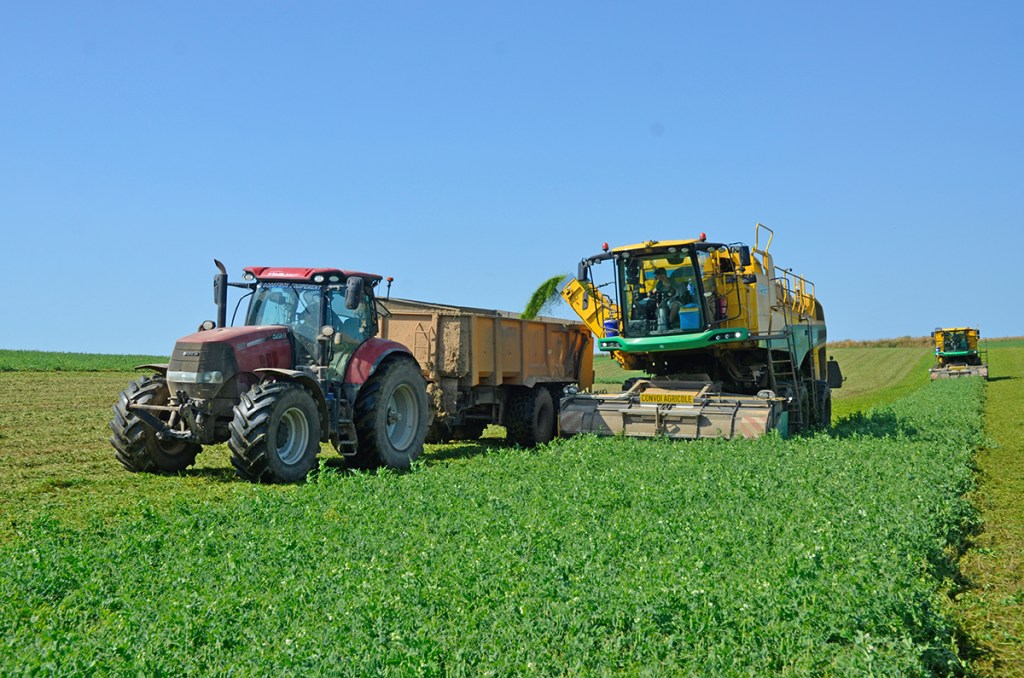
GPS steering systems are popular on French machines, and the contractor is well pleased with the Oxbo-developed system, which results in a full header width with each pass. And should a driver nod off then both machines are equipped with a system that automatically brings the harvester to a halt and sounds an alarm when it reaches the headland boundary (does not switch off the threshing systems).
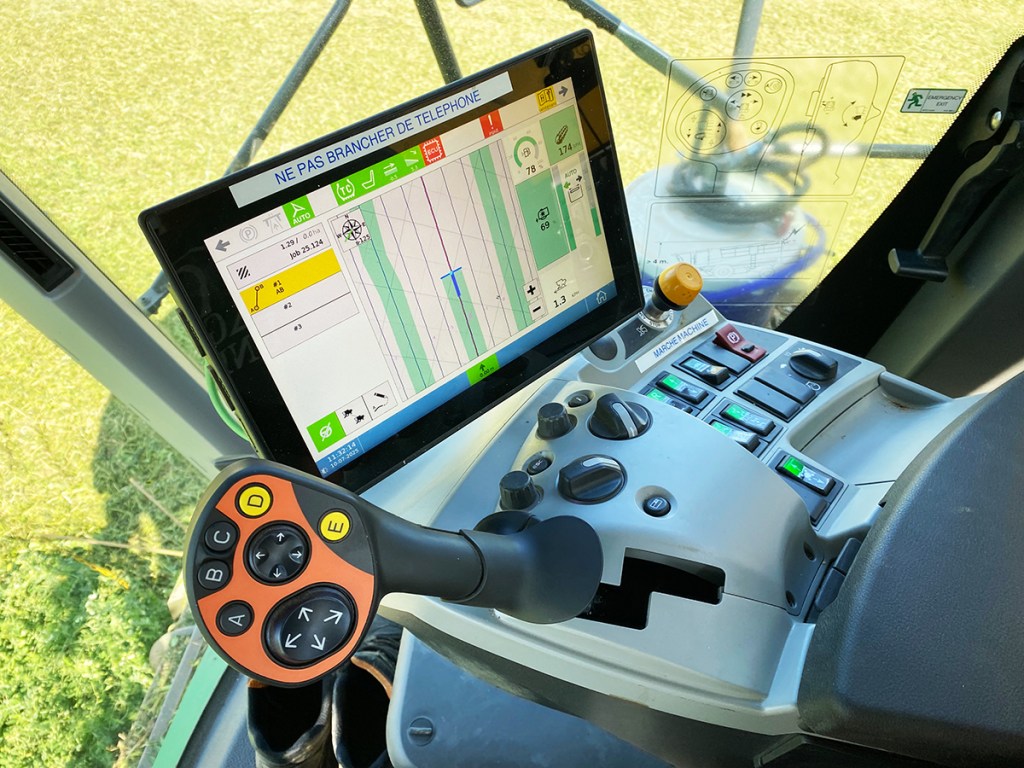
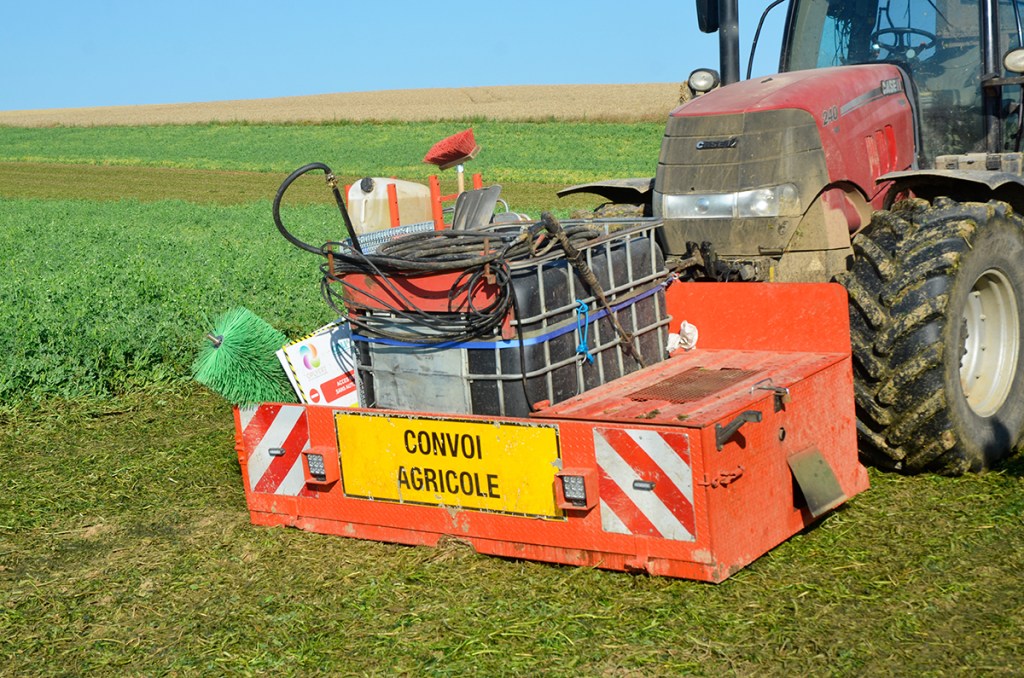
The future
The GP6300s work two daily shifts from 7am to 7pm and 7pm to 7am. The team stops at 1pm on Saturdays. The afternoon is reserved to give the two harvesters a thorough clean. Work resumes again sometime Sunday evening.
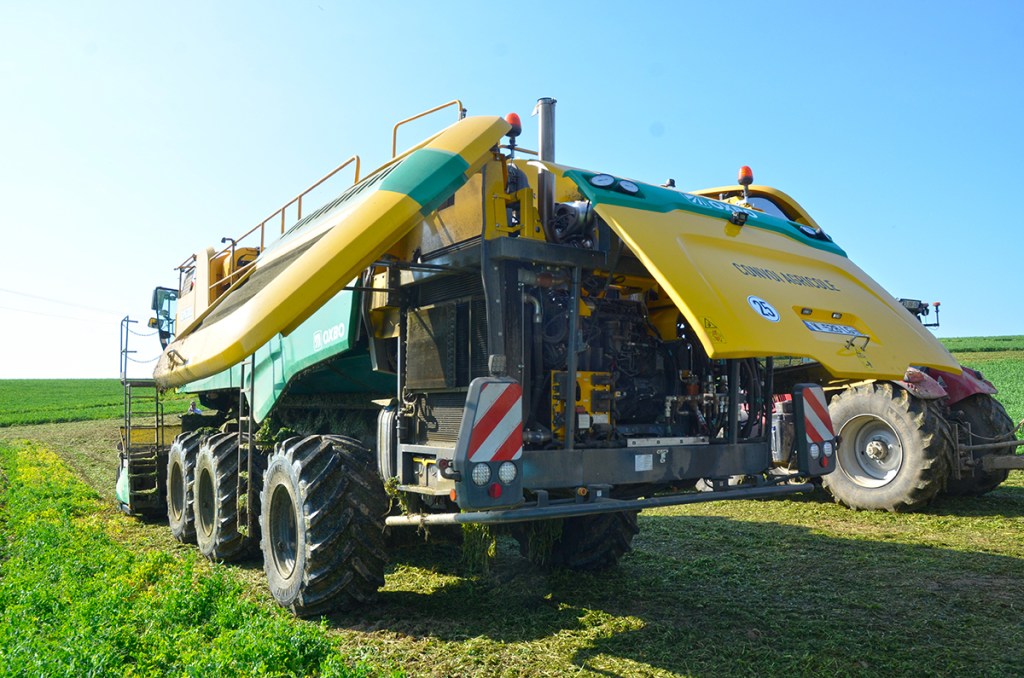
Each machine will clock up around 1,000 hours during the two-month season, and the French contractor is hopeful of at least nine to ten years of service from each of the roughly €800,000-costing machines.
Looking ahead, Oxbo is currently testing a four-wheeled variant of the GP6300, and there is more than a faint hint of a rubber-tracked prototype being in the field for tests in 2026. However, future developments are not limited to the running gear and the company confirms it is working on a new broad bean picking header. It is also looking to give the harvester more technology. “We see a future for more automation and vision-based systems,” comments Mr van der Meulen.
We will have to wait and see what the company has in mind. All Mr van der Meulen is prepared to add is that the focus for the future is on concepts to simplify things, increase capacity, produce the highest quality peas and reduce factory losses. “We have some exciting technology planned for the future and it will be easier to innovate on a single platform. We have high hopes for the GP6300.”
Back to the present. Next season will be the last one for the Oxbo EPD540e, PMC 1189 and Oxbo 6170. From 2027, the GP6300, which will be built at the Dutch facility in Roosendaal, will be the only Oxbo pea harvester. The rest will all be relegated to the history books.
Steven Vale
For more up-to-date farming news click here and subscribe now to profi and save.

